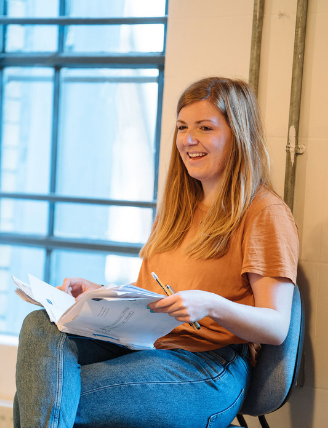Miriam Battye's Writing Exercise
Miriam Battye shares a three-part writing exercise that you can try at home.
Miriam Battye is a writer from Manchester. Her play, Scenes with girls, premiered in the Jerwood Theatre Upstairs in 2020.
Miriam was the first Sister Pictures Writer in Residence in 2018 and has various original ideas in development for television.
Something I think about, and refer to a lot, is the ‘dream’ of the play I am about to write. What is the dream of the play?
If this sounds a little bit untechnical, strange and emotional, it’s because, yeah, it is. And I am.
To me, a play does not happy fully in the imagination, or on the page, or on the stage, it happens in between these three spaces, and I like to think of this as a dream space. When I am lost or irritated with my play, I try and return to that dream.
As well as being a sensory space, something you can feel (I can often feel a play a bit), a dream also refers to your hopes or aspirations, for your play, for yourself or for the world you occupy. I like that double-meaning, I find that useful.

I don’t think you could come up with a dream for a play in an exercise, however here’s a 3 part exercise that might help you think about how you can translate a dream or idea into something that actually happens on the page, and on the stage.
Set a timer for a minute. Spend a minute on each of the following lists:
Things that frighten me
Things that piss me off
Things that give me hope
Things I want to understand
Now, put that to the side.
Write a list of ACTS OF the following words. For example, an ACT OF love, might be a kiss, or cutting the burnt bits off someone’s toast, or killing someone’s shithead neighbour for them. Some of these may seem a little harder to grasp than others, but go with it.
Love
Violence
Compassion
War
Loneliness
Revenge
Mortality
Rage
Youth
Pain
Courage
Mothering
Survival
Fuck it
Now go back to your other list. Choose what of the things that frighten you, give you hope, piss you off, want to understand, that you are most drawn to and write an ACT OF that thing.
If you put that ACT OF something into a space with characters, you may have the beginnings of a scene about something you care about. And if you think about that act as a centrepoint for a play or a character’s journey, and build around it, you might be able to start building a dream of a play.
